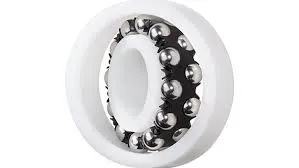
Dec . 10, 2024 15:43 Back to list
taper roller bearing clearance
Understanding Taper Roller Bearing Clearance
Taper roller bearings are widely used in various automotive and industrial applications due to their ability to handle both radial and axial loads. One of the critical aspects of ensuring the performance and longevity of these bearings is the correct adjustment of their clearance. Bearing clearance refers to the space between the rolling elements and the raceways, which can significantly influence the bearing's operational efficiency. This article explores the importance of taper roller bearing clearance, how it is measured, and the factors that affect it.
What is Bearing Clearance?
Bearing clearance is the amount of axial and radial play allowed between the rolling elements and the races in a bearing assembly. For taper roller bearings, which are designed to accommodate high axial loads, proper clearance is essential for maintaining optimal contact between the rollers and the raceways, as well as ensuring smooth operation under varying load conditions.
Importance of Correct Clearance
The clearance in taper roller bearings is crucial for several reasons
1. Load Distribution Proper clearance ensures that the load is evenly distributed across the rolling elements, which helps in minimizing wear and prolonging the bearing's life.
2. Heat Dissipation Bearings operate under load and generate heat. Adequate clearance allows for the thermal expansion of components, facilitating better heat dissipation and preventing overheating.
3. Vibration and Noise Reduction Insufficient clearance can lead to increased contact friction, resulting in vibration and noise during operation. Optimal clearance mitigates these issues, leading to a smoother and quieter performance.
4. Contamination Prevention Adequate clearance can help prevent the ingress of contaminants by allowing the bearing seals to perform effectively, ultimately safeguarding the bearing's interior from wear.
Measuring Bearing Clearance
The clearance of taper roller bearings is typically measured using feeler gauges or micrometers when the bearing is assembled. Generally, the clearance can be categorized into three types
taper roller bearing clearance

1. Radial Clearance This is the distance between the roller and the raceway when there is no load applied. It can be measured by applying a small amount of force on the outer race and measuring the gap.
2. Axial Clearance This is the distance the bearing can move axially without causing any contact. This is essential in taper roller bearings as they are designed to accommodate axial loads.
3. Total Clearance This is the sum of radial and axial clearances and is often the most critical measurement to ensure proper bearing function.
Factors Affecting Bearing Clearance
Several factors can influence the required clearance setting in taper roller bearings
1. Load Conditions The operational loads that a bearing is subjected to—both static and dynamic—can alter the ideal clearance. Bearings operating under heavy loads tend to need tighter clearances.
2. Temperature Variations Temperature fluctuations can cause thermal expansion in the bearing components, thereby affecting the clearance. Bearings exposed to high temperatures may require increased clearance to accommodate expansion.
3. Mounting Conditions The way in which a bearing is mounted can also affect its clearance. Misalignment during installation may lead to undesirable wear patterns and altered clearance profiles.
4. Lubrication Adequate lubrication is essential for rolling element bearings. Poor lubrication can lead to excessive heat and wear, necessitating a review of the bearing clearance.
Conclusion
In conclusion, the proper adjustment of taper roller bearing clearance is vital for maximizing performance, enhancing durability, and minimizing operational issues. Careful measurement and consideration of the various factors impacting clearance can lead to significant improvements in efficiency and longevity. For those who work with taper roller bearings, understanding and managing clearance is not just a technical necessity; it is an integral part of mechanical engineering that contributes directly to the reliability and success of the machinery involved. Regular assessments and adjustments can ensure that these critical components function optimally, ultimately leading to better overall equipment performance.
Latest news
-
Premium Deep Groove Ball Bearings | High Speed & Reliability
NewsAug.29,2025
-
Durable Scaffolding Clamps - Secure & Reliable Tube Connectors
NewsAug.28,2025
-
Common Failures in Thrust Ball Bearings and Solutions
NewsAug.22,2025
-
How Tapered Roller Bearings Can Take Shock Loads
NewsAug.22,2025
-
Angular Bearings in High-Precision Spindles
NewsAug.22,2025
-
The Impact of Misalignment on Cylindrical Roller Bearing Performance
NewsAug.22,2025
